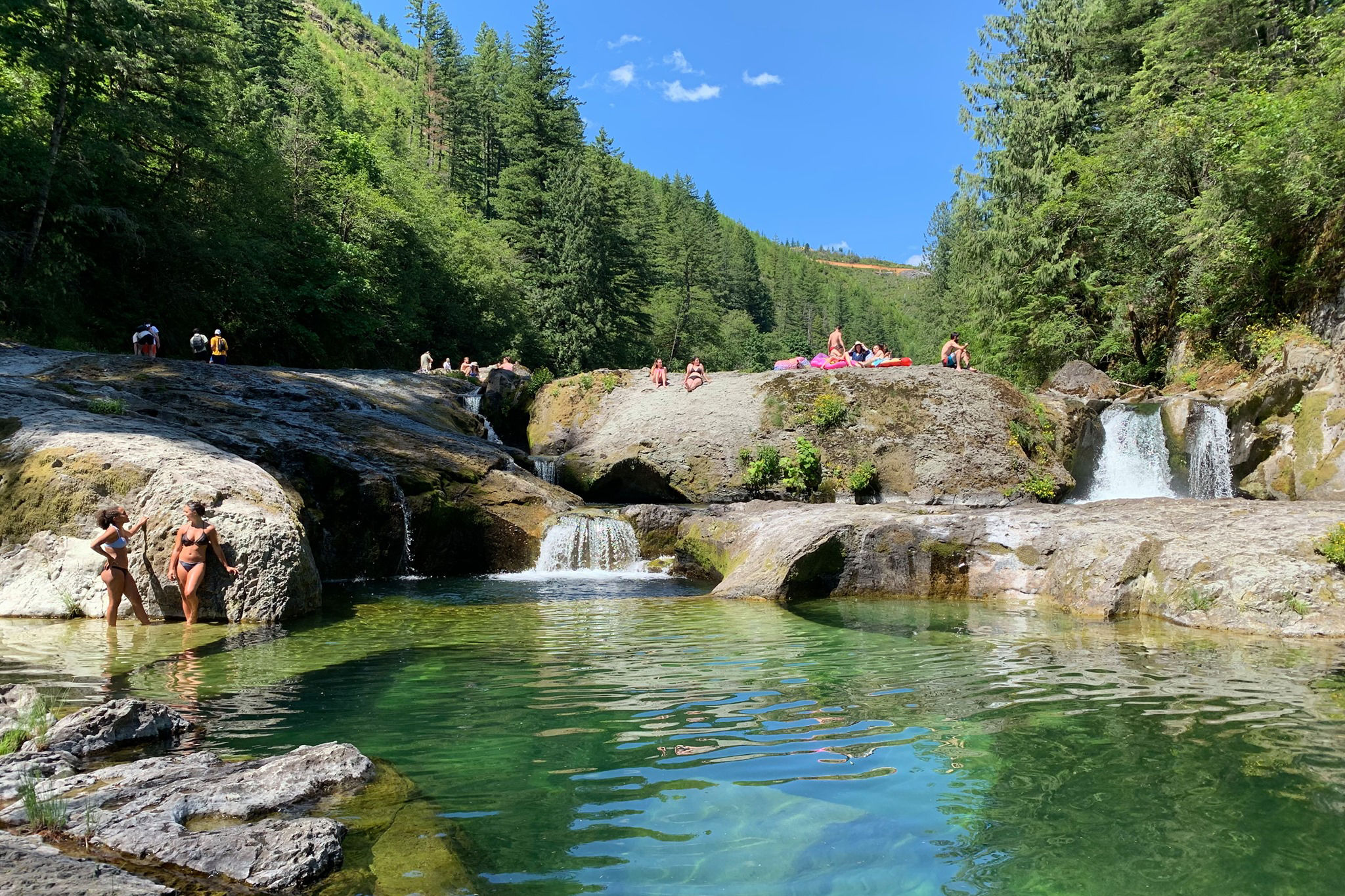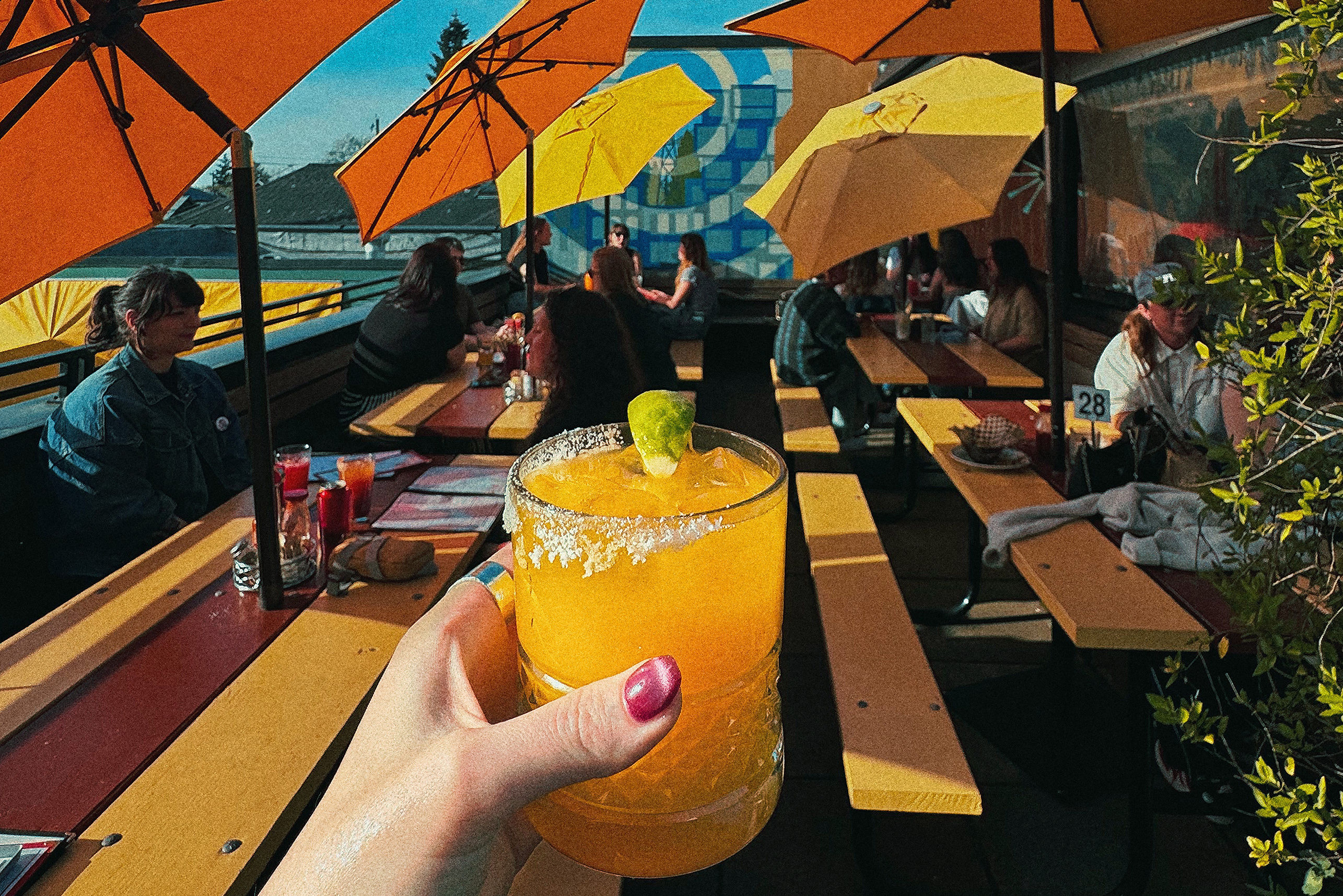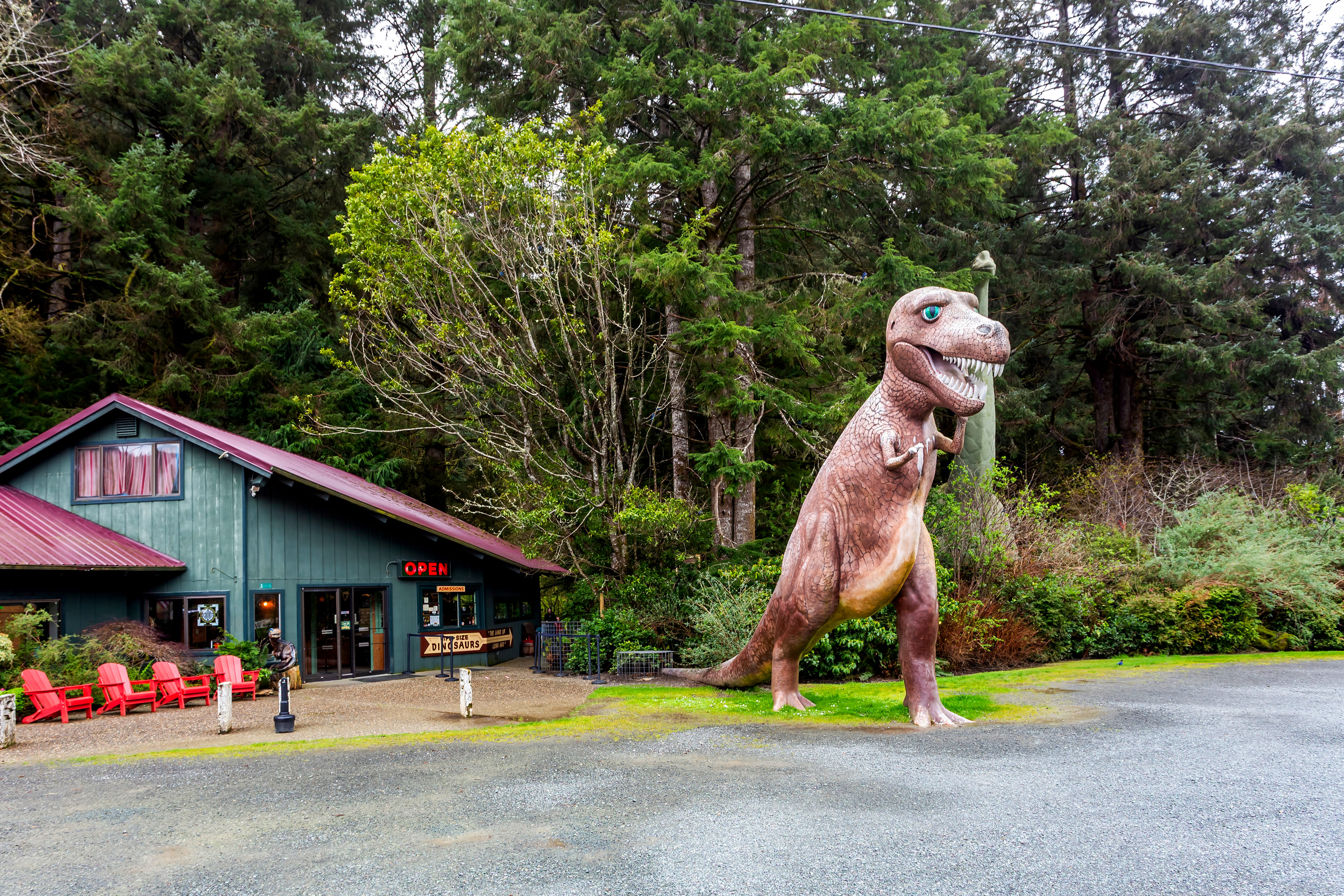This Year, Grown-Ups Can Go to Sleepaway Camp, Too
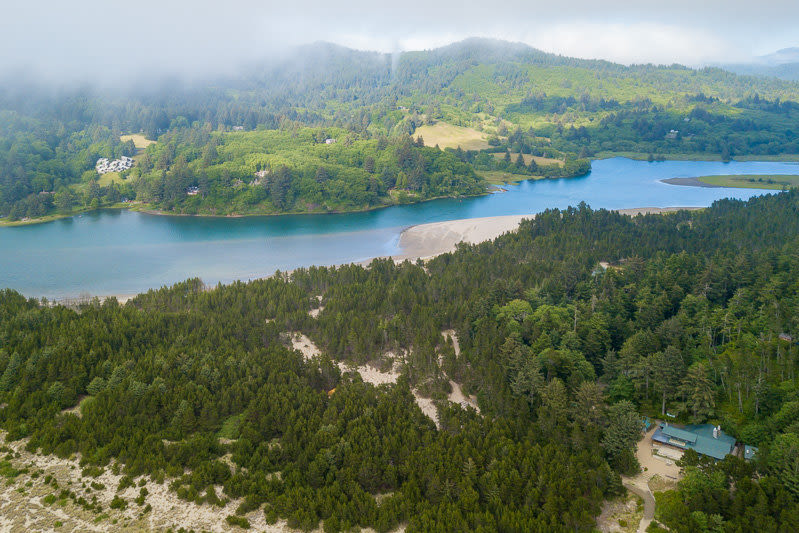
An aerial view of Camp Westwind on the Oregon coast, captured via drone
Image: Courtesy Nick Macdonald
Has there ever been a year when children and parents—cooped up together at home for days on end, no release valves in sight—needed sleepaway summer camps more?
Even in a nonpandemic summer, sleepaway camps can be magic, a chance for kids to reinvent themselves for a week or two, to form fleeting but intense friendships with bunkmates, to be beyond the reach of screens, to be agreeably smudged and barefoot and unbound.
This summer, it’s not to be. Like her counterparts in most states, Oregon Gov. Kate Brown put the kibosh on traditional camp, concluding kids from different households suddenly living and sleeping in the same small bunkhouse was, sadly, not the best idea in the age of coronavirus. (Technically, camps can operate in counties in Oregon’s Phase 2 of reopening, but the many rules—only people in the same household can share a cabin, for one—make it virtually impossible.)
That’s left camps in a bind. Already reeling from the loss of revenue from called-off Outdoor School spring (and likely fall) programs, the felled summer programs seemed like a knockout blow.
But from disaster can come opportunity. While a few camps make extra dough even in regular summers by hosting other groups in between kid sessions, this year those opportunities have multiplied. Large groups can rent Camp Tamarack’s lakeside retreat in the Central Oregon Cascades in three-day chunks, for example, and other camps, from author Beverly Cleary’s old stomping grounds at Camp Namanu in the Sandy River watershed to the dreamlike Opal Creek Ancient Forest Center along the Little North Santiam River, are now renting out their suddenly available cabins individually for a socially distant, back-to-camp experience that will soothe the souls of both camp-deprived children and adults who still remember their camp days with crushing nostalgia.
It’s not the same, of course. A whole family or friend group goes together, instead of parents waving goodbye to kids as they head out with packed duffel bags and sleeping bags. Instead of leading hikes, organizing capture the flag, policing the GaGa ball pit and teaching kids how to make friendship bracelets, the few counselors on hand spend their time disinfecting shared spaces, from bathrooms to lodge/dining halls.
Go ahead, mourn what’s lost. But also, whether this is a tradition you grew up with or you never had and want to try, see this as a once-in-a-lifetime shot to go (back) to summer camp, back to meal bells and songs around the campfire and staying up to count the stars. By next summer, if we all wear our masks and listen to Dr. Anthony Fauci, summer camp will be just for kids again—now’s our chance.

Renovated cabins interior at Westwind
Image: Courtesy Westwind
My two tweens (extra surly from far too much screen time and isolation) and I recently packed up and headed to Camp Westwind, which sits on an unspeakably idyllic pocket beach on the Oregon Coast, in the no-man’s-land south of Neskowin and north of Lincoln City, for a weekend away. (The camp is also offering three-night visits during the week, with check-ins on Mondays and checkouts on Thursdays.) Prepare to start roughing it as soon as you pull into their parking area just off Highway 101—it’s a two-mile walk into camp down a shady, mostly flat road. Your luggage will be safely loaded into laundry bins and placed onto a truck to be driven in.
We paid $175 a night for a cabin that could fit nine people, which might be a bargain if you’ve been bubbling with a small group of family or friends and can split the cost, plus $50 per person for the five hearty and delicious meals we were served while there.
It was a genuine thrill to have someone else cook our meals, after three and a half months of an endless breakfast-lunch-dinner-dishwashing cycle, plus the constant snack foraging that comes with bored kids. Staff members said they were thrilled to have people to feed again. That might have contributed to the gigantic portions they sent out, which came neatly packed into a milk crate labeled with our cabin’s name. Masks are required when you go into the lodge to pick up your crate or get a cup of coffee, and most guests migrated to picnic tables and benches dotted around the property to eat their meals al fresco.
Cabins are simple and clean, with two pairs of bunks, disinfected mattresses, and a counselor’s single bed under a window (immediately claimed by my daughter). It’s bring-your-own sleeping bag, pillow, and top sheet, but we were provided a pretty delightful “activities kit” upon arrival, including a trail guide and a photo scavenger hunt, plus assorted supplies for making nature-inspired art. (Also in your cabin: disinfectant spray and wipes to clean high-touch surfaces, which you’re also asked to do after using the shared bathrooms.)
But you’re not there to sit in your cabin. We spent our two days giddily unbound, outside at every possible second, exploring every inch of the camp, from a two-mile round-trip puffer hike that leads you up a ridge overlooking a glorious coastal vista to the tide pools and sea-stack tunnels at the southern end of the beach. With 529 acres, physical distancing is a breeze, and being outside of cell range is a huge plus.
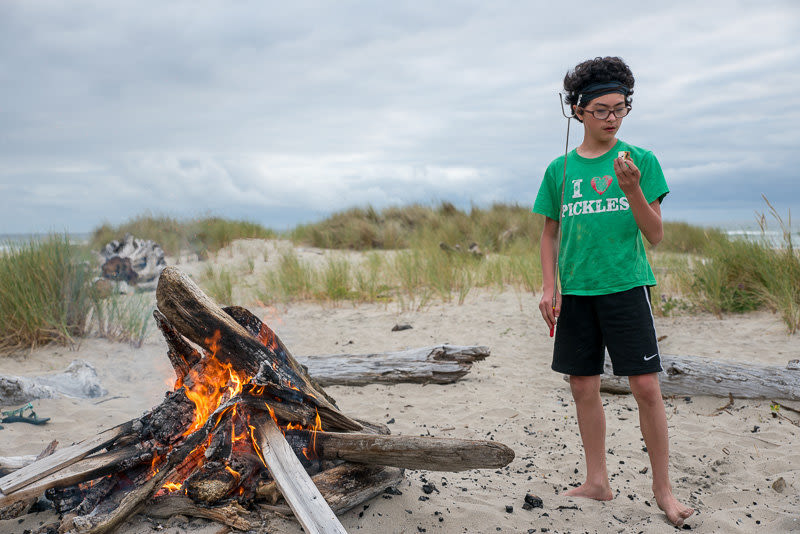
Kaito Ono, 13, examines a marshmallow during a socially distant bonfire at Camp Westwind.
Image: Courtesy Nick Macdonald
Screens not an option for the first time in months, my kids built driftwood bonfires on the beach, traced their names in the sand, and ventured to the estuary, where the Salmon River spills into the ocean along the camp’s northern edge. Friends of ours rented their own cabins, and all the parents simultaneously teared up watching a multi-age, multi-gender gaggle of kids self-organize into a socially distant game of Red Light, Green Light—a memory to carry us through the seemingly endless battles over Fortnite and YouTube that awaited at home.
The initiative has been so successful for Westwind, says Amy Carlow, the camp’s interim executive director, that summer weekends are nearly full and September dates have been added, not to mention that some of the camp’s full-time staff members have been able to hang onto their jobs.
“The fact that we had to cancel summer camp was devastating,” says Carlow. “This new opportunity helps us financially. It gives us a little bit of hope that we will make it through this time.”
